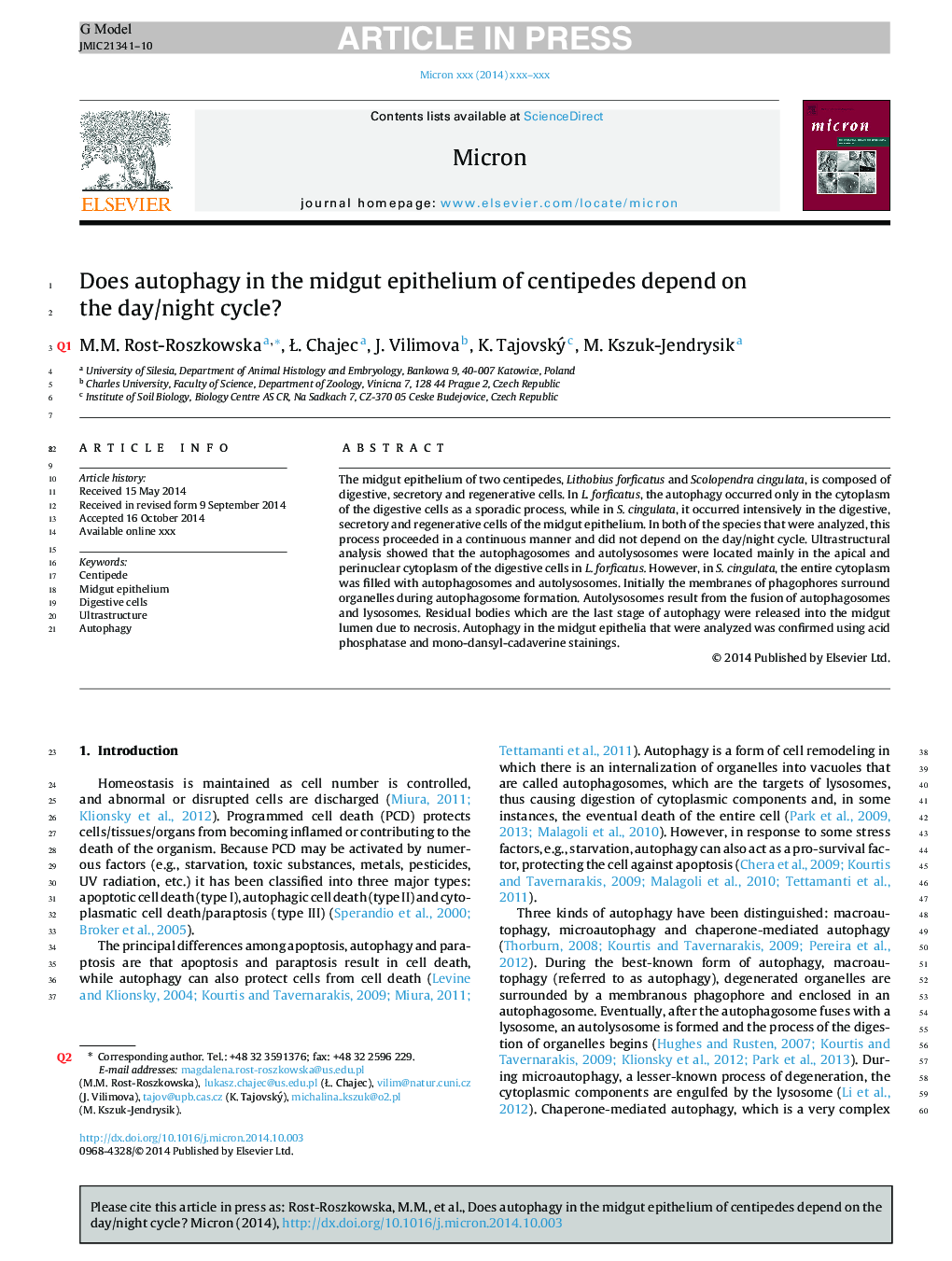| Article ID | Journal | Published Year | Pages | File Type |
|---|---|---|---|---|
| 7986748 | Micron | 2015 | 10 Pages |
Abstract
The midgut epithelium of two centipedes, Lithobius forficatus and Scolopendra cingulata, is composed of digestive, secretory and regenerative cells. In L. forficatus, the autophagy occurred only in the cytoplasm of the digestive cells as a sporadic process, while in S. cingulata, it occurred intensively in the digestive, secretory and regenerative cells of the midgut epithelium. In both of the species that were analyzed, this process proceeded in a continuous manner and did not depend on the day/night cycle. Ultrastructural analysis showed that the autophagosomes and autolysosomes were located mainly in the apical and perinuclear cytoplasm of the digestive cells in L. forficatus. However, in S. cingulata, the entire cytoplasm was filled with autophagosomes and autolysosomes. Initially the membranes of phagophores surround organelles during autophagosome formation. Autolysosomes result from the fusion of autophagosomes and lysosomes. Residual bodies which are the last stage of autophagy were released into the midgut lumen due to necrosis. Autophagy in the midgut epithelia that were analyzed was confirmed using acid phosphatase and mono-dansyl-cadaverine stainings.
Related Topics
Physical Sciences and Engineering
Materials Science
Materials Science (General)
Authors
M.M. Rost-Roszkowska, Å. Chajec, J. Vilimova, K. Tajovský, M. Kszuk-Jendrysik,
